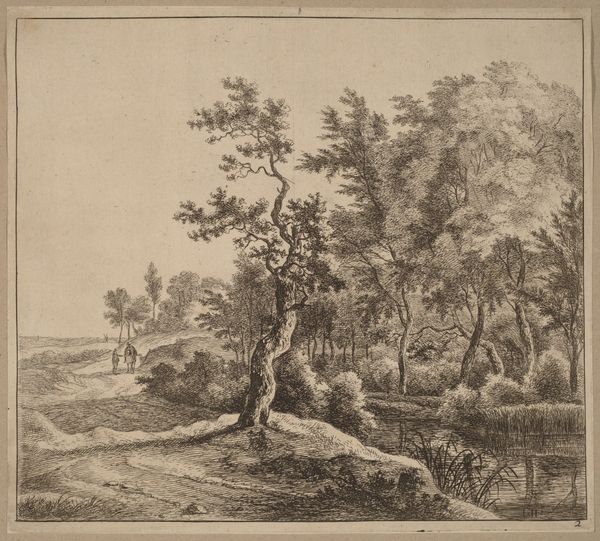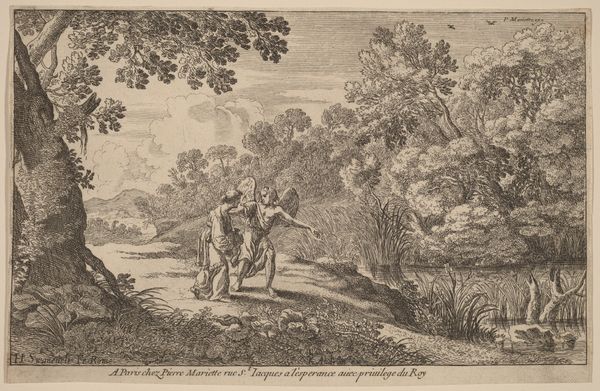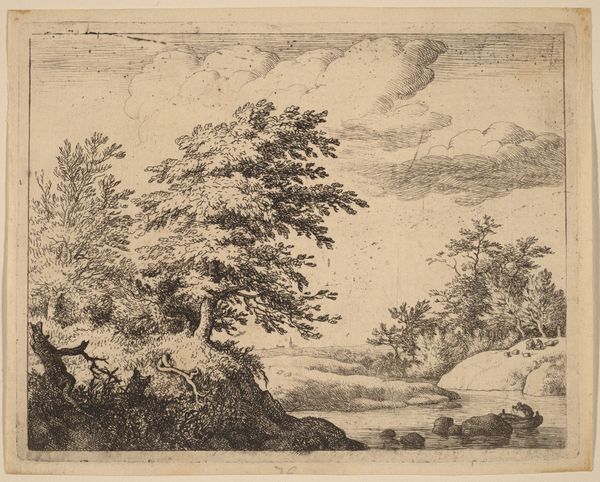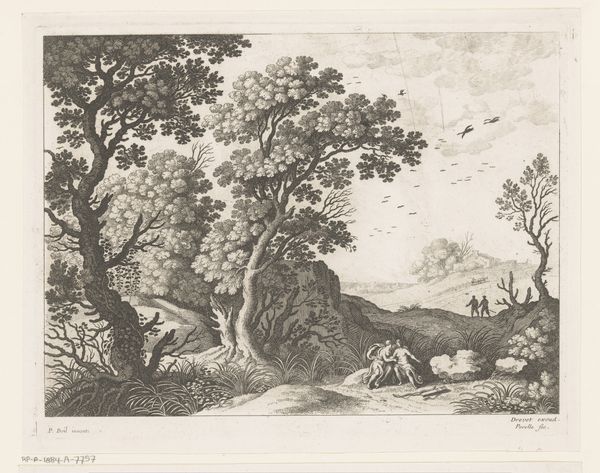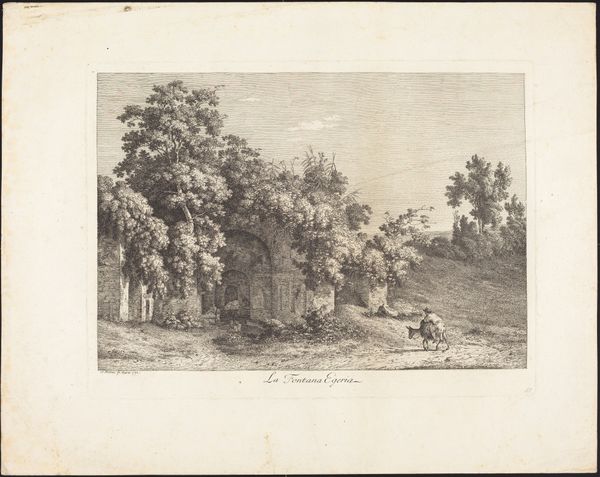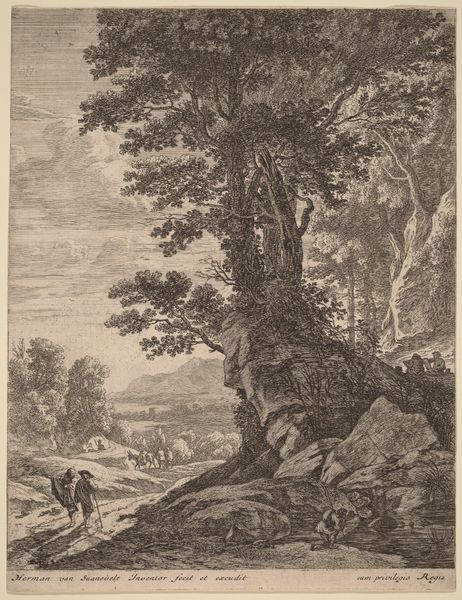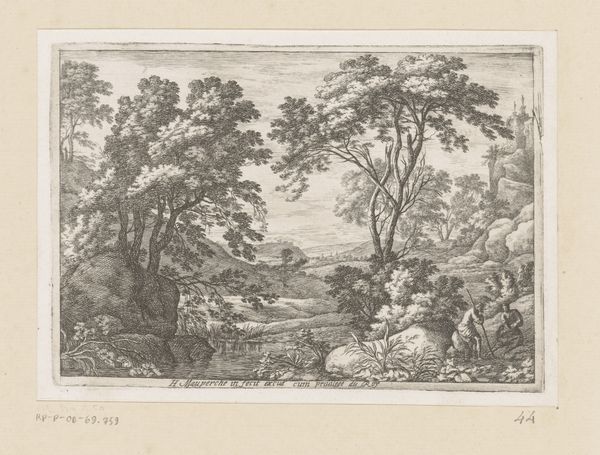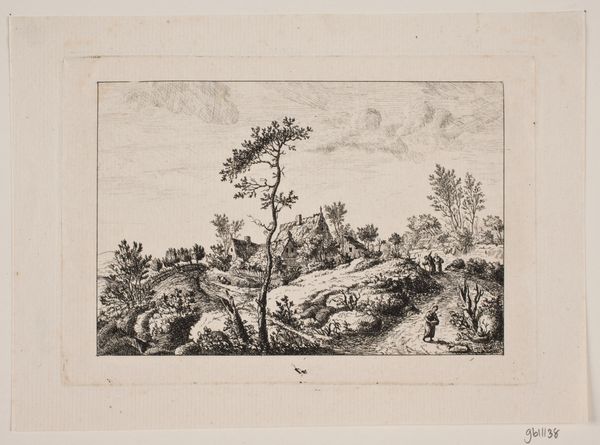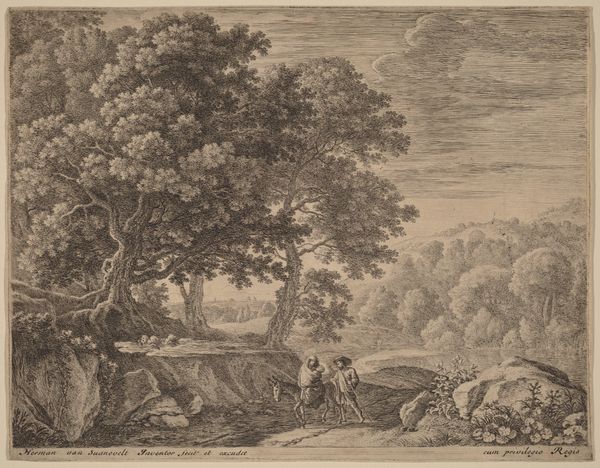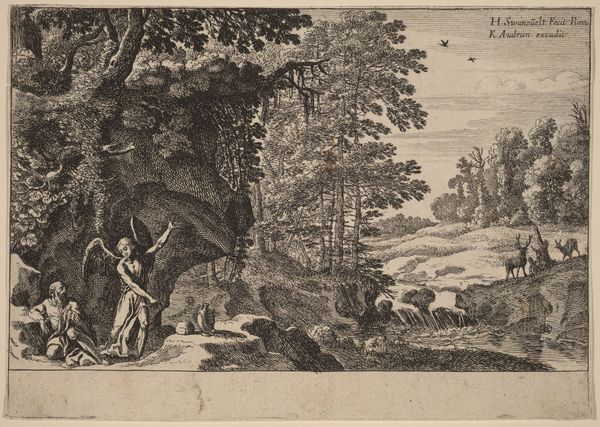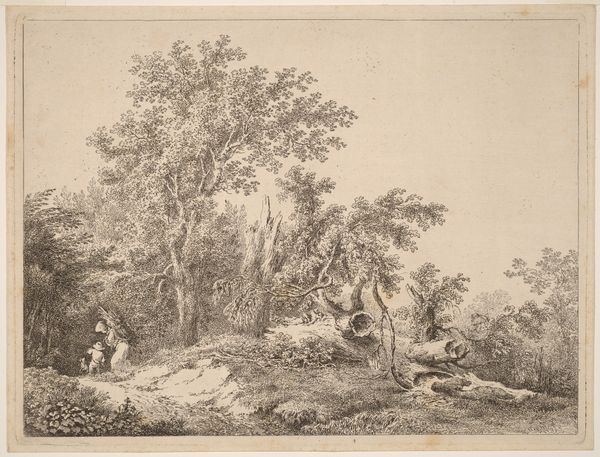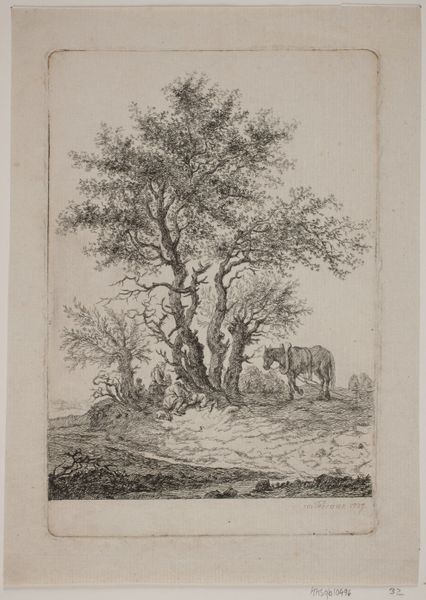
drawing, print, etching
#
drawing
#
dutch-golden-age
# print
#
etching
#
landscape
#
etching
#
realism
Dimensions: Sheet: 4 5/8 × 5 3/4 in. (11.7 × 14.6 cm)
Copyright: Public Domain
Editor: Here we have Jacob van Ruisdael’s etching, "The Three Oaks," dating roughly from 1640 to 1682. The delicate lines create a surprisingly serene and somewhat melancholic landscape. What strikes you most about this piece? Curator: This seemingly straightforward landscape speaks volumes about the evolving relationship between humans and nature in the Dutch Golden Age. It begs the question: Is this simply a picturesque scene, or does it reflect deeper socio-political currents? Consider the period. The Dutch Republic had just achieved independence and was asserting itself on the world stage. How might the depiction of the land, particularly these ancient oaks, be intertwined with emerging ideas of national identity and even ownership? Editor: That’s fascinating! I hadn't considered the connection to Dutch identity. So, the trees might symbolize strength and resilience? Curator: Exactly! Think about the enduring presence of trees, especially oaks. They become silent witnesses to history, embodying ideas of rootedness and continuity. Ruisdael’s focus on the natural world aligns with the broader 17th-century context where land reclamation and resource management were becoming increasingly important. Does the scale of the trees perhaps reflect the perceived dominance and control over the natural landscape? Editor: So, you are saying, the art is reflecting the moment in time through the image? I never considered how it could imply both the celebration and perhaps the control over nature... Thank you. Curator: Exactly. Analyzing how artists like Ruisdael negotiate these complexities enriches our understanding not only of art history but also of cultural history. A new perspective for us both!
Comments
No comments
Be the first to comment and join the conversation on the ultimate creative platform.
